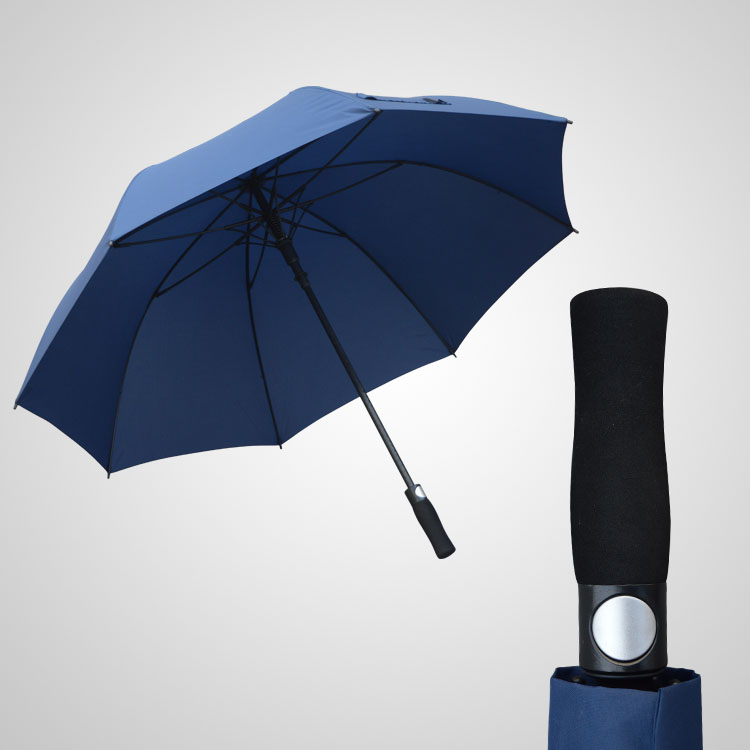How to Design the Perfect Custom Windproof Umbrella

Title:
Introduction:
An umbrella is not just a simple tool to protect us from the rain. It can also be a stylish accessory that reflects our personality and taste. However, not all umbrellas are created equal. Windy days can turn a pleasant stroll into a frustrating battle with a flimsy and unreliable umbrella. That’s why designing a custom windproof umbrella can be a great idea. In this article, we will guide you through the process of creating the perfect custom windproof umbrella.
Step 1: Choose the right frame
The frame of an umbrella is crucial for its stability and resistance to wind. Look for a frame made of strong and flexible materials such as fiberglass or aluminum. Also, make sure that the ribs are reinforced and that the mechanism is easy to open and close.
Step 2: Select the fabric
The fabric of your umbrella should be durable, water-resistant, and able to withstand strong winds. Nylon and polyester are popular choices for umbrellas, as they are lightweight and quick-drying. You can also opt for a UV-protective fabric if you live in a sunny area.
Step 3: Decide on the size and shape
The size and shape of your umbrella will depend on your personal preferences and needs. A compact umbrella is practical for travel and easy to carry, while a full-sized umbrella offers more coverage. As for the shape, a classic round or square canopy is timeless, while a more modern and edgy shape can add a unique touch to your design.
Step 4: Customize the design
Now comes the fun part! A custom windproof umbrella allows you to express your creativity and make a statement. You can choose from a wide range of colors, patterns, and prints, or even add your logo or a personal message. Consider the occasion and the audience when selecting the design.
Step 5: Test the prototype
Before mass-producing your custom windproof umbrella, make sure to test a prototype to ensure its functionality and quality. Test it on a windy day, check the durability of the fabric and the frame, and make any necessary adjustments.
Conclusion:
Designing a custom windproof umbrella can be a rewarding and practical project. By following these steps, you can create a unique and functional accessory that reflects your style and personality. Don’t let the wind ruin your day, and enjoy the rain with your perfect custom windproof umbrella.
Introduction
Designing a windproof umbrella can be a challenging task. It requires careful consideration of various factors such as the materials, size, shape, and design. In this article, we will explore the key factors to consider when designing the perfect custom windproof umbrella.
Materials
The materials used in the construction of a windproof umbrella are essential in determining its durability and effectiveness. The canopy should be made of a sturdy, waterproof material such as nylon or polyester. The frame should be made of a flexible, lightweight material such as fiberglass or aluminum. Additionally, the handle should be made of a comfortable, non-slip material such as rubber or cork.
Size and Shape
The size and shape of a windproof umbrella are also vital considerations. The canopy should be large enough to provide adequate coverage, but not so large that it becomes difficult to handle. A compact, lightweight design is preferable, as it makes the umbrella easy to carry around. Additionally, the shape of the canopy should be aerodynamic, with a pointed edge that helps to deflect wind.
Design
The design of a windproof umbrella can be a crucial factor in its effectiveness. A double canopy design, with two layers of fabric, can help to increase the umbrella’s stability in windy conditions. Additionally, a vented canopy, with small holes that allow air to circulate, can also help to reduce wind resistance. The handle design should also be considered, with a comfortable grip that allows for easy handling.
Testing
Before finalizing the design of a windproof umbrella, it is essential to test it in various weather conditions. Wind tunnel testing can help to determine its stability in windy conditions, while rain testing can help to ensure its waterproofing capabilities. Testing should also be done to ensure that the umbrella is easy to open and close, and that the handle is comfortable to hold.
Conclusion
Designing the perfect custom windproof umbrella requires careful consideration of various factors such as materials, size and shape, design, and testing. By following these guidelines, you can create an umbrella that is both durable and effective in protecting you from the wind and rain. With the right design, you can enjoy a comfortable and stylish umbrella that will last for years to come.
